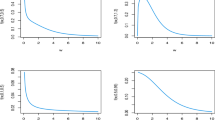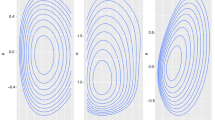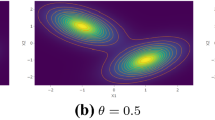Abstract
Exceedances over high thresholds are often modeled by fitting a generalized Pareto distribution (GPD) on R+. It is difficult to select the threshold, above which the GPD assumption is enough solid and enough data is available for inference. We suggest a new dynamically weighted mixture model, where one term of the mixture is the GPD, and the other is a light-tailed density distribution. The weight function varies on R+ in such a way that for large values the GPD component is predominant and thus takes the role of threshold selection. The full data set is used for inference on the parameters present in the two component distributions and in the weight function. Maximum likelihood provides estimates with approximate standard deviations. Our approach has been successfully applied to simulated data and to the (previously studied) Danish fire loss data set. We compare the new dynamic mixture method to Dupuis' robust thresholding approach in peaks-over-threshold inference. We discuss robustness with respect to the choice of the light-tailed component and the form of the weight function. We present encouraging simulation results that indicate that the new approach can be useful in unsupervised tail estimation, especially in heavy tailed situations and for small percentiles.
Similar content being viewed by others
References
Balkema, A.A. and de Haan, L., “Residual life time at great age,” Annals of Probability 2, 792–804, (1974).
Crovella, M. and Taqqu, M., “Estimating the heavy tail index from scaling properties,” Methodology and Computing in Applied Probability 1, 55–79, (1999).
Davison, A.C. and Smith, R.L., “Models for exceedances over high thresholds (with discussion),” Journal of the Royal Statistical Society, Series B 5(3), 393–442, (1990).
Dupuis, D.J., “Exceedances over high thresholds: A guide to threshold selection,” Extremes 1(3), 251–261, (1999).
Embrechts, P., Klüppelberg, C., and Mikosch, T., Modelling Extremal Events, number 33 in Applications of Mathematics: Stochastic Modelling and Applied Probability, Springer Verlag, Heidelberg, 1997.
Feuerverger, A. and Hall, P., “Estimating a tail exponent by modelling departure from a Pareto distribution,” The Annals of Statistics 27(2), 760–781, (1999).
Gilks, W.R., Richardson, S., and Spiegelhalter, D.J., Markov Chain Monte Carlo in Practice, Chapman & Hall, London, 1996.
McNeil, A.J., Estimating the tails of loss severity distributions using extreme value theory, Technical report, Department Mathematik, ETH Zentrum, Zürich.
Meng, X.L. and van Dyk, D., “The em algorithm—an old folk-song sung to a fast new tune (with discussion),” Journal of the Royal Statistical Society, Series B 59(3), 511–567, (1997).
Pickands, J. “Statistical inference using extreme order statistics,” The Annals of Statistics 3, 119–131, (1975).
Resnick, S.I., “Heavy tail modeling and teletraffic data,” The Annals of Statistics 25(5), 1805–1869, (1997).
Robert, C.P. and Casella, G., Monte Carlo Statistical Methods, Springer-Verlag, New York, 1999.
Rootzen, H. and Tajvidi, N., “Extreme value statistics and wind storm losses: A case study,” Scandinavian Actuarial Journal 1, 70–94, (1997).
Author information
Authors and Affiliations
Rights and permissions
About this article
Cite this article
Frigessi, A., Haug, O. & Rue, H. A Dynamic Mixture Model for Unsupervised Tail Estimation without Threshold Selection. Extremes 5, 219–235 (2002). https://doi.org/10.1023/A:1024072610684
Issue Date:
DOI: https://doi.org/10.1023/A:1024072610684




